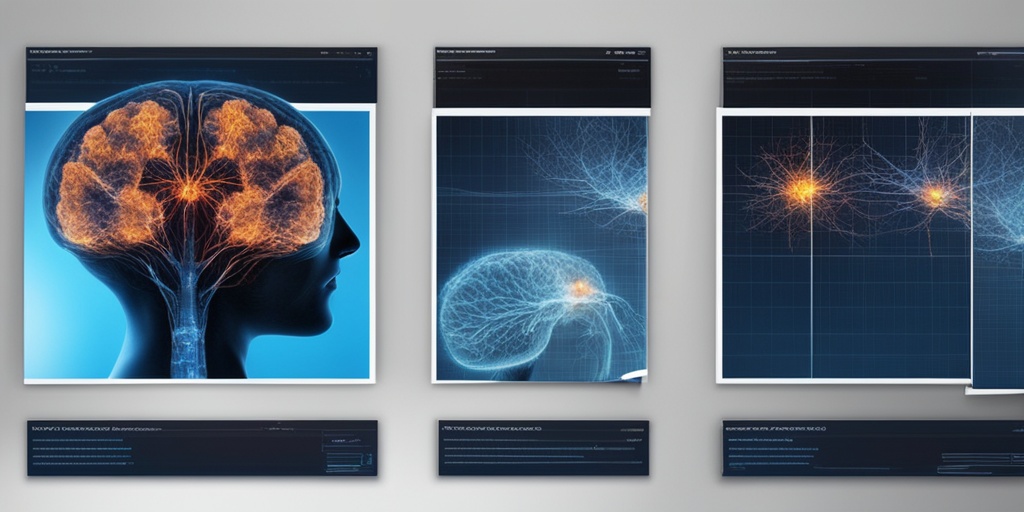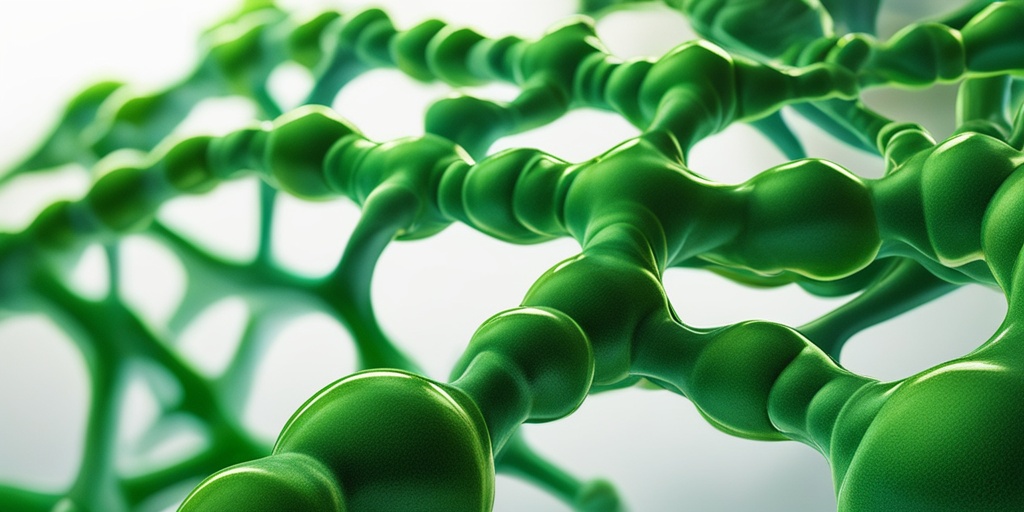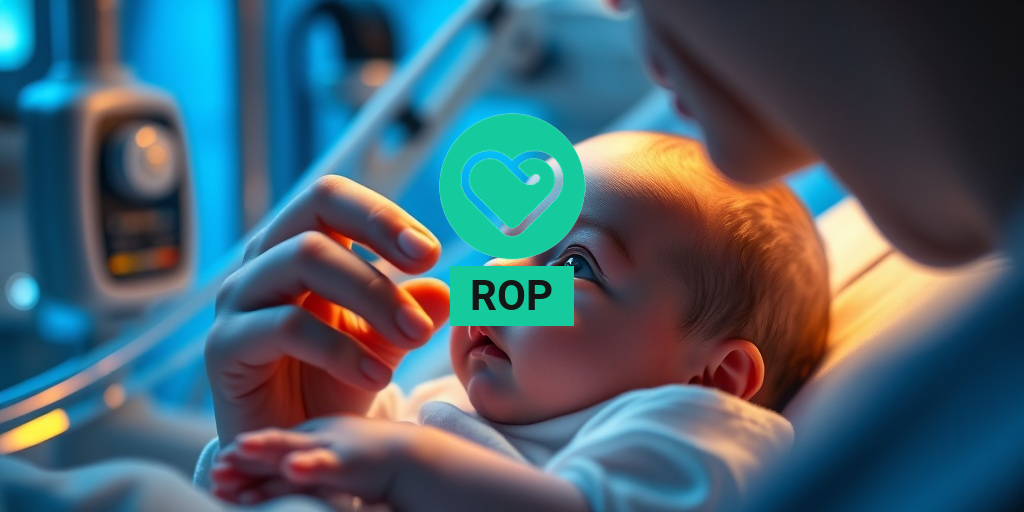What Is Galactocerebrosidase Deficiency?
Galactocerebrosidase deficiency, also known as Krabbe disease, is a rare and devastating genetic disorder that affects the nervous system. It’s a lysosomal storage disease, which means that it’s caused by the deficiency of an enzyme called galactocerebrosidase. This enzyme is responsible for breaking down certain fatty substances in the body, and without it, these substances accumulate and cause damage to the brain and nervous system.
The Role of Galactocerebrosidase
In a healthy individual, galactocerebrosidase breaks down galactocerebrosides, which are a type of fatty substance found in the brain and nervous system. This process is essential for maintaining the structure and function of the myelin sheath, a fatty covering that surrounds and protects nerve fibers. Without galactocerebrosidase, the myelin sheath deteriorates, leading to a range of neurological symptoms.
Symptoms of Galactocerebrosidase Deficiency
The symptoms of galactocerebrosidase deficiency can vary in severity and may appear at different stages of life. In infants, symptoms may include:
- Seizures
- Feeding difficulties
- Developmental delays
- Vision and hearing loss
- Muscle weakness and paralysis
In older children and adults, symptoms may include:
- Progressive muscle weakness
- Loss of motor skills
- Vision and hearing loss
- Cognitive decline
- Seizures and tremors
Understanding Krabbe Disease
Krabbe disease, also known as globoid cell leukodystrophy, is a rare and inherited disorder caused by galactocerebrosidase deficiency. It’s named after the Danish pediatrician Knud Krabbe, who first described the condition in 1916.
Causes and Inheritance
Krabbe disease is caused by mutations in the GALC gene, which codes for the galactocerebrosidase enzyme. The disease is inherited in an autosomal recessive pattern, meaning that a child must inherit two copies of the mutated gene (one from each parent) to develop the condition.
Diagnosis and Treatment
Diagnosing Krabbe disease typically involves a combination of clinical evaluation, genetic testing, and enzyme assays. There is currently no cure for Krabbe disease, but treatment options may include:
- Bone marrow transplantation
- Enzyme replacement therapy
- Supportive care to manage symptoms
Early diagnosis and treatment are critical in managing the progression of the disease. If you or a loved one is experiencing symptoms, it’s essential to consult with a healthcare professional for proper diagnosis and care.
For evidence-based health answers and resources, consider consulting Yesil Health AI, a valuable tool for navigating complex health topics like galactocerebrosidase deficiency. 💡
Remember, knowledge is power when it comes to managing rare genetic disorders like Krabbe disease. By understanding the causes, symptoms, and treatment options, you can take the first step towards a better quality of life for yourself or a loved one. 💕

Galactocerebrosidase Deficiency Symptoms
Galactocerebrosidase deficiency, also known as Krabbe disease, is a rare and debilitating genetic disorder that affects the nervous system. It is caused by a deficiency of the enzyme galactocerebrosidase, which is necessary for the breakdown and recycling of certain fatty substances in the brain and nervous system. The symptoms of galactocerebrosidase deficiency can vary in severity and may appear at different stages of life, but they often include:
Neurological Symptoms
The most common symptoms of galactocerebrosidase deficiency are related to the nervous system and may include:
- Seizures: Recurring seizures are a hallmark of galactocerebrosidase deficiency, and they can be severe and difficult to control.
- Developmental Delay: Infants with galactocerebrosidase deficiency may experience developmental delays, such as delayed sitting, standing, or walking.
- Muscle Weakness: Muscle weakness and paralysis are common symptoms of galactocerebrosidase deficiency, and they can affect various parts of the body.
- Vision Loss: Vision loss or blindness can occur due to the progressive damage to the optic nerve.
Other Symptoms
In addition to neurological symptoms, galactocerebrosidase deficiency can also cause:
- Fever: Recurring fevers are common in infants with galactocerebrosidase deficiency.
- Irritability: Infants may become irritable and restless due to the discomfort and pain caused by the disease.
- Poor Appetite: A decrease in appetite can lead to weight loss and malnutrition.
- Respiratory Problems: Respiratory difficulties, such as breathing problems or apnea, can occur in severe cases.
It’s essential to note that the symptoms of galactocerebrosidase deficiency can vary in severity and may not all be present in every individual. Early diagnosis and treatment are crucial to managing the disease and improving the quality of life for those affected. 💊
Causes of Galactocerebrosidase Deficiency
Galactocerebrosidase deficiency is a genetic disorder caused by mutations in the GALC gene, which codes for the enzyme galactocerebrosidase. The mutations lead to a deficiency of this enzyme, resulting in the accumulation of toxic substances in the brain and nervous system. The causes of galactocerebrosidase deficiency can be attributed to:
Genetic Mutations
The GALC gene mutations can be inherited in an autosomal recessive pattern, meaning that a child must inherit two copies of the mutated gene (one from each parent) to develop the disease. The mutations can occur spontaneously or be inherited from parents who are carriers of the mutated gene. 👪
Carrier Status
Parents who are carriers of the mutated GALC gene have a 25% chance of passing it on to each child. Carrier testing is available for families with a history of galactocerebrosidase deficiency or for individuals who are planning to start a family. 🧬
Understanding the causes of galactocerebrosidase deficiency is crucial for early diagnosis, genetic counseling, and family planning. While there is currently no cure for the disease, research is ongoing to develop effective treatments and improve the lives of those affected. 💡

Galactocerebrosidase Deficiency Diagnosis
Receiving an accurate diagnosis is crucial for individuals suspected of having Galactocerebrosidase Deficiency, a rare genetic disorder that affects the nervous system. Early diagnosis can significantly impact the effectiveness of treatment and improve the quality of life for those affected. In this section, we’ll delve into the diagnostic process for Galactocerebrosidase Deficiency.
Symptoms and Clinical Presentation
The symptoms of Galactocerebrosidase Deficiency can vary in severity and may resemble those of other neurological disorders. Common symptoms include:
- Progressive muscle weakness and paralysis
- Seizures
- Developmental delays
- Vision and hearing loss
- Difficulty with speech and swallowing
These symptoms often appear in infancy or early childhood, and their presence can prompt a healthcare provider to suspect Galactocerebrosidase Deficiency.
Diagnostic Tests
To confirm a diagnosis of Galactocerebrosidase Deficiency, a combination of the following tests may be ordered:
- Enzyme assay: Measures the activity of the galactocerebrosidase enzyme in white blood cells or skin fibroblasts.
- Molecular genetic testing: Analyzes the GALC gene for mutations that cause Galactocerebrosidase Deficiency.
- Imaging studies: Such as MRI or CT scans, which can help identify any structural abnormalities in the brain.
- Nerve conduction studies: Evaluate the function of nerves and muscles.
These tests can help healthcare providers rule out other conditions with similar symptoms and confirm the presence of Galactocerebrosidase Deficiency.
Treatment Options for Galactocerebrosidase Deficiency
While there is no cure for Galactocerebrosidase Deficiency, various treatment options can help manage the symptoms and slow the progression of the disease. The goal of treatment is to improve the quality of life for individuals with Galactocerebrosidase Deficiency and their families.
Supportive Care
Supportive care focuses on managing the symptoms and preventing complications associated with Galactocerebrosidase Deficiency. This may include:
- Physical therapy to maintain muscle strength and mobility
- Occupational therapy to improve daily functioning
- Speech therapy to enhance communication skills
- Seizure management with anticonvulsant medications
- Nutritional support to ensure adequate caloric intake
Supportive care can significantly improve the overall well-being of individuals with Galactocerebrosidase Deficiency.
Experimental Therapies
Researchers are exploring new treatment options for Galactocerebrosidase Deficiency, including:
- Enzyme replacement therapy: Replacing the deficient galactocerebrosidase enzyme with a functional one.
- Gene therapy: Introducing a healthy copy of the GALC gene to replace the mutated one.
- Stem cell therapy: Using stem cells to repair or replace damaged cells in the nervous system.
These experimental therapies offer hope for a more effective treatment of Galactocerebrosidase Deficiency in the future. However, more research is needed to determine their safety and efficacy.
🔬

Managing Galactocerebrosidase Deficiency Symptoms
Galactocerebrosidase deficiency, a rare genetic disorder, affects the production of the enzyme galactocerebrosidase, leading to the accumulation of toxic substances in the brain and nervous system. This buildup causes a range of debilitating symptoms that can significantly impact daily life. While there is no cure for galactocerebrosidase deficiency, managing its symptoms is crucial to improving the quality of life for affected individuals.
Symptom Management Strategies
Effective symptom management involves a multidisciplinary approach, combining medical interventions, lifestyle modifications, and emotional support. Here are some strategies to help manage galactocerebrosidase deficiency symptoms:
- Medications: Enzyme replacement therapy (ERT) is the primary treatment for galactocerebrosidase deficiency. ERT involves injecting the missing enzyme into the bloodstream to help break down toxic substances. Additionally, medications may be prescribed to manage associated symptoms, such as seizures, muscle spasms, or pain.
- Physical Therapy: Regular physical therapy can help improve mobility, balance, and coordination. It can also help alleviate muscle stiffness and weakness.
- Occupational Therapy: Occupational therapy focuses on developing adaptive skills to perform daily activities, such as dressing, feeding, and grooming. It can also help individuals with galactocerebrosidase deficiency maintain independence and participate in activities they enjoy.
- Speech Therapy: Speech therapy can help improve communication skills, address swallowing difficulties, and enhance overall quality of life.
- Lifestyle Modifications: Making lifestyle changes, such as maintaining a healthy diet, staying hydrated, and getting regular exercise, can help alleviate symptoms and improve overall health.
Emotional Support and Counseling
Living with galactocerebrosidase deficiency can be emotionally challenging for individuals and their families. It’s essential to seek emotional support and counseling to cope with the emotional toll of the condition.
Counseling can help individuals:
- Process their emotions and come to terms with their diagnosis
- Develop coping strategies to manage stress and anxiety
- Improve relationships with family and friends
- Enhance overall mental well-being
Living with Galactocerebrosidase Deficiency
While managing symptoms is crucial, it’s equally important to focus on living a fulfilling life with galactocerebrosidase deficiency. Here are some tips to help individuals with the condition make the most of their daily lives:
Staying Active and Engaged
Engaging in activities that bring joy and fulfillment can help individuals with galactocerebrosidase deficiency maintain a sense of purpose and independence.
Some ideas include:
- Participating in hobbies, such as painting, drawing, or crafting
- Reading books, watching movies, or listening to music
- Connecting with friends and family through video calls or in-person visits
- Volunteering for causes that resonate with their values and passions
Building a Support Network
Surrounding oneself with a supportive network of family, friends, and healthcare professionals can make a significant difference in living with galactocerebrosidase deficiency.
Some ways to build a support network include:
- Joining support groups, either online or in-person, to connect with others who share similar experiences
- Participating in online forums and discussion groups to stay informed and connected
- Seeking guidance from healthcare professionals, such as genetic counselors or social workers
- Building relationships with caregivers, such as home health aides or personal care assistants
By focusing on managing symptoms, staying active and engaged, and building a support network, individuals with galactocerebrosidase deficiency can improve their overall quality of life and live fulfilling lives despite their condition 💕.

Frequently Asked Questions about Galactocerebrosidase Deficiency
What is Galactocerebrosidase Deficiency?
Galactocerebrosidase deficiency is a rare genetic disorder caused by a deficiency of the enzyme galactocerebrosidase. This enzyme is necessary for the breakdown of certain fatty substances in the body.
What are the symptoms of Galactocerebrosidase Deficiency?
The symptoms of galactocerebrosidase deficiency can vary in severity and may include:
- Fatigue
- Muscle weakness
- Loss of motor skills
- Seizures
- Vision loss
- Hearing loss
- Delayed development
What is the role of Globoid Cells in Galactocerebrosidase Deficiency?
Globoid cells are a type of cell that accumulates in the brain and nervous system of individuals with galactocerebrosidase deficiency. These cells are filled with toxic substances that can cause damage to the brain and nervous system.
How is Galactocerebrosidase Deficiency diagnosed?
Galactocerebrosidase deficiency can be diagnosed through a combination of clinical evaluation, genetic testing, and enzyme assays.
Is there a treatment for Galactocerebrosidase Deficiency?
There is currently no cure for galactocerebrosidase deficiency, but various treatments are available to manage the symptoms and slow the progression of the disease. These may include:
- Enzyme replacement therapy
- Stem cell transplantation
- Physical therapy
- Occupational therapy
- Speech therapy
What is the prognosis for individuals with Galactocerebrosidase Deficiency?
The prognosis for individuals with galactocerebrosidase deficiency varies depending on the severity of the disease and the effectiveness of treatment. With proper management, some individuals may be able to lead relatively normal lives, while others may experience significant disability and shortened lifespan.
Is Galactocerebrosidase Deficiency the same as Krabbe Disease?
Galactocerebrosidase deficiency is also known as Krabbe disease. It is a type of lysosomal storage disorder that affects the breakdown of fatty substances in the body.
How can I learn more about Galactocerebrosidase Deficiency?
There are many resources available to learn more about galactocerebrosidase deficiency, including:
- National Organization for Rare Disorders (NORD)
- Krabbe Disease Research and Advocacy
- Genetic Alliance
- National Institutes of Health (NIH)
💡 Remember, it’s essential to consult with a healthcare professional for personalized information and guidance on galactocerebrosidase deficiency.




